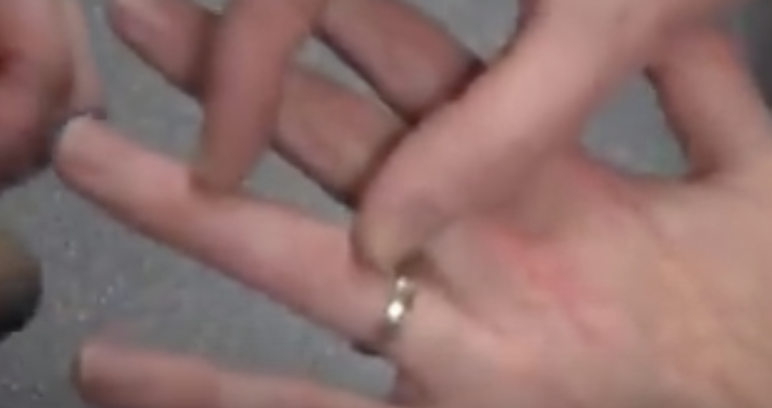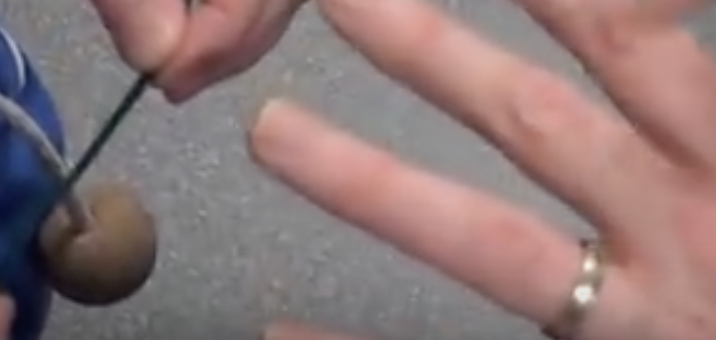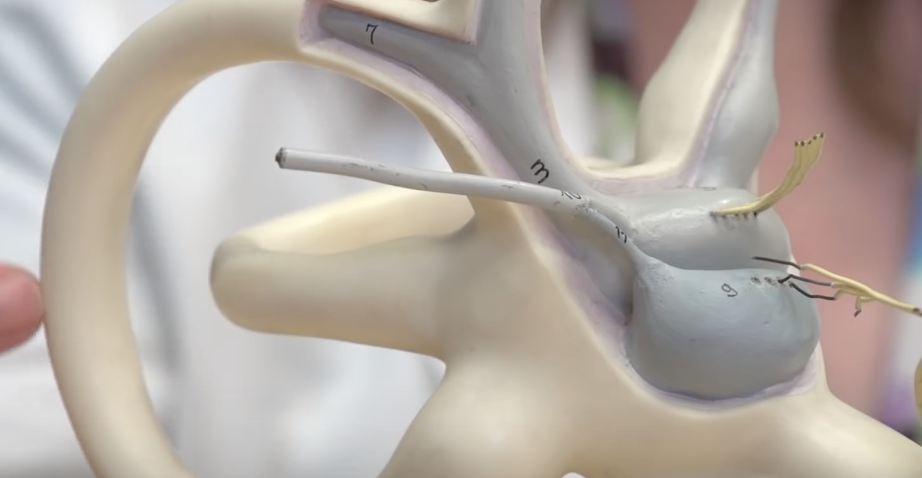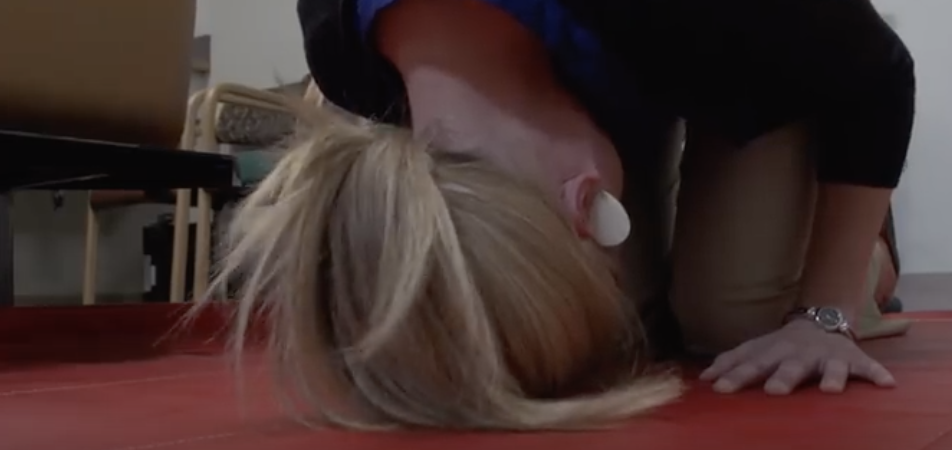If Your Car Is Underwater and Sinking Quickly You Need To Do THIS If You Want To Live!

Imagine driving along down the road when suddenly a deer pops out of nowhere. Instinctively you swerve to avoid hitting it and in the process you lose control of the car and end up in a lake. Immediately the car starts to sink and it quickly begins to fill up with water! What do you do?

If you were inside of a sinking vehicle, would you know what to do? Many people have no idea what their best course of action would be in such a situation. They’ve probably never even thought about it before because the chances of that ever happening seem so remote.

In the United States alone it’s estimated that upwards of 400 people drown every year in cars that become trapped in water. While it may be rare, the possibility of it happening to anyone, anywhere, at anytime remains. As the saying goes, an ounce of prevention is worth a pound of cure.

If you know what to do and how to escape a sinking car, you’ll be much better prepared and more likely to survive the event. Most people panic and freeze when caught up in a flooded car because they don’t know what to do. Some try to call 911 for help, but by the time it arrives it’ll be too late and that type of reaction is more likely to get you killed than saved. Every single second matters and from the moment you hit the water the clock starts ticking.

The main thing you want to do is get out of the car as quickly as you possibly can. The first thing you should do is roll the window down while taking off your seat belt. It’s vital to roll down the window because the water can cause a car’s computerized electronic system to malfunction or short out.

If you go under trapped in a car with rolled up windows and closed doors, getting out becomes all but impossible. Unless you have a special tool designed to break the car window, nothing short of superhuman strength will be able to smash through the pressurized glass.

Once the window is down and your seat belt is off, get out of the car as quickly as you can because oftentimes you have less than one minute to react and get out. If you are a passenger in the back seat of a car with windows that don’t roll all the way down, you’ll have to go out the front window. If there are young children in the back seat they need help from an adult and should be taken out of their seats and passed through the front window, after it has been rolled down and the adults seat belt unbuckled.

Be sure to watch the accompanying ABC News clip that shows you exactly how to react and escape from a sinking car. They run through several different scenarios, including getting out from the front seat driver’s perspective, as a rear passenger, and helping kids out. Share this article and clip with friends and family because the information it contains may end up saving your life one day, or that of someone you love.

Please Share This With Family and Friends
This Is The Only Way You Will Ever Cut A Mango Again. How Did I Not Know About This Earlier?

Cutting a mango can be a tricky process. They tend to be very slippery and many people cut themselves when they are peeling the skin off the fruit. To reduce the risk of injury it is best to use a serrated edged knife, being very careful that the knife doesn’t slip.

A lot of accidents are caused by simple carelessness and rushing through things, and by being mindful and extremely cautious you can prevent mishaps. To learn more on how to cut a mango check out this video where it’s done in an unusual yet simple and effective manner.

The man with the amazing mango skills is a Mexican street vendor. It looks like he must specialize in speed cutting techniques because he makes slicing and dicing a mango look effortless. First he hacks off one end of the fruit and pushes a stick up into it, then holds it in one hand with the stick pressed against his chest.

Expertly and steadily he slices off half the skin before grabbing the stick and removing the rest. Then he starts to twirl it around while making downwards cuts evenly all around the mango, spiraling until he reaches the topmost part. The result looks like a flower and resembles a pine cone in the way the pieces fold out from the middle. With the fruit on a stick and cut in this fashion it can be easily eaten and enjoyed.

Mangos are the most widely consumed fruit in the world and their popularity is steadily growing. They are so delicious and healthy for you that they are even referred to as the “king of fruits.” Each mango is packed with soluble fiber, vitamins C, A, E, B6, as well as 25 different kinds of carotenoids.

Research has shown that antioxidants in the popular fruit help to protect against colon, breast, leukemia, and prostate cancers. Their high fiber content improves digestion and lowers cholesterol while high levels of tartaric and malic acid help to alkalize the whole body. The list of mango derived health benefits is lengthy, they even improve intimacy drive and are a good remedy for heat stroke, so grab yourself one and eat it today!

Please Share This Mango Cutting Technique With Family and Friends
A Ring Got Stuck On His Swollen Finger. But He Removes It With This Unexpected Simple Trick!

Have you ever tried to remove a ring from a finger that has swollen, or tried one on that turned out to be too small? Trying to get it to come off without damaging the ring (or your finger!) can be quite frustrating, and can invoke more than a little panic. Fortunately, after watching this video, you will be able to remove any ring from any finger in no time!

Although this trick is especially useful in the hospital setting, where rings are consistently cut off due to swelling, it is equally useful anywhere rings and fingers are found. Using no more than a thin elastic strap and something pointy, a ring that would otherwise have to be cut can be saved.

For many of us, a ring represents a long term commitment and the immense love that goes with it. Having a trick up your sleeve that will allow you to save such a priceless piece of someone’s life may prove useful beyond measure. If you know any other useful tricks, let us know in the comments below.

Please Share This Trick With Family and Friends
You Must Learn This Simple Tick Removal Trick Before You Go Outside This Spring

Ticks are tiny, nasty, carriers of disease that can be found all over the place. They are most active in spring and summer months, but are resilient and may even be found in fall and winter, depending on where you live. They can spread numerous bacterial, viral, and toxic diseases other than the most commonly known ones such as Lyme disease, Rocky Mountain Spotted Fever, and Tularemia. A tick can harbor more than one disease and thus one bite can infect a person with multiple diseases.

The facts regarding ticks are scary and if you ever get bit by one you need to remove it as soon as possible. The quicker you can get it’s head out of your skin the better, because doing so greatly reduces the chance of infection. Most people remove them with tweezers, which can be effective, but oftentimes the tick’s body gets pulled off and the head/mouth remains attached. Instead, the next time you have a live tick biting you, try this quick and easy alternative technique to help remove it.

All you need is a cotton swab, water and good lighting. Take the cotton swab and quickly dip it in water to slightly moisten the tip, which will help make it glide smoothly along the skin. Place the cotton swab tip on the back of the tick so that it’s slightly angled, and not directly over it.

Push the tick around in circles so that it rotates around it’s axis, or hypostome which is it’s mouth part. After about 3-5 rotations the tick should release it’s bite and back itself out of the skin. Now you should be able to pick up the tick with the end of the cotton swab and can dispose of it properly.

The video explains that this method works by essentially coaxing the tick with cotton swab to let go of your skin. The sides of a tick’s mouth have a bunch of tiny, barb-like, bristles that project out and help to anchor it to the skin. These mouth-anchor attachments are what makes it so difficult to properly and completely remove a tick.

They anchor the tick’s head and mouth so securely that when you go to pull it off with tweezers you often end up separating the tick’s body from it’s mouth part. The tick’s mouth remains embedded and attached, still biting you, and is now even harder to remove. With this cotton swab method, the tick will back itself out of your skin and release it’s bite. There are no nasty body parts left behind and you don’t have to dig around in your skin with tweezers, which can increase the likelihood of infection.

Please Share This Technique With Family and Friends
I’ve Been Cutting Cake The Wrong Way This Whole Time. How Did I Not Know This?

There is a right way and a wrong way to cut a cake. Chances are you, and most everyone you know, have been doing it the wrong way your entire life. This video from YouTube user Numberphile explains and demonstrates the proper way to cut up a delicious slice of cake so that when you store the leftover pieces for later they stay moist. No one wants to eat leftover cake that has become crusty, hardened, and dried out, so check it out!

The method was first described in a December 20th 1906 issue of Nature Magazine. British mathematician, Sir Francis Galton, eloquently wrote in a letter to the editor “The ordinary method of cutting out a wedge is very faulty.” He then went on to describe the ideal way to cut up a round cake based on mathematical and scientific principles. Starting in the center of the cake, with a long knife, cut two parallel lines completely through it.

Remove the rectangular segment from the middle as that piece is for eating. You should end up with two halves that can be pushed together. This closes the cake into a smaller version of its former shape, thus allowing the inside edges of the cut parts to stay fresh longer. For the second slice, cut another central cross-section at a right angle, or 90 degrees, to the original cut.

Now you should have 4 cake segments that can be pushed back together into an even smaller round cake. All edges should be sealed in and will remain deliciously moist for much longer. The technique is not what you’d expect but when it’s all said and done it makes perfect sense.

When it comes time to store it in the refrigerator the probability of exposed edges drying out is dramatically decreased since they are sealed in. Now the next time you are at a party where cake is being served you can impress everyone with your scientifically tested cake cutting skills!

Please SHARE This Technique With Family and Friends
Do You Get Dizzy or Have Vertigo? This Doctor Has a Simple Way To Get Rid Of It In Under a Minute.

If you have ever suffered from Vertigo then you know exactly how seriously scary it can be. The sudden feelings of extreme dizziness make you feel off-balance and even though you are standing still, everything around you keeps moving. People often describe it as feeling like you’re trapped, frozen in place, or paralyzed, yet the world is spinning. As if that’s not bad enough, many vertigo episodes are accompanied by nausea, sweating, vomiting, headaches, ringing in the ears, and sometimes even uncontrollable rapid eye jerking.

For ten years Sue Ricker, a retired school teacher from Aurora, Colorado, had to deal with unexpected episodes of vertigo. She told Denver News CBS4 reporter Kathy Walsh that “It was just debilitating. Everything about you will move, will spin. I couldn’t drive.

I couldn’t walk. I had to hold onto the wall and it was very, very scary.” Nothing seemed to help her until she came across a video on how to treat the most common form of vertigo (positional vertigo) that Dr. Carol Foster had posted on YouTube. The simple treatment method worked and Sue finally had a solution to help alleviate her vertigo and a way to take back control of her life.

Doctor Carol Foster is an Associate Professor who specializes in Otolaryngology at the University of Colorado Hospital. She’s the one who originally developed the incredibly easy cure that can be done at home, or virtually anywhere for that matter, and has worked for countless people all over the wold who suffer from positional vertigo. It’s called the ‘half somersault maneuver’ because it involves a series of highly specific movements and poses.

Dr. Foster explains the simple home treatment in the accompanying video and walks us through each step. Be sure to check it out because her daughter demonstrates the maneuver and it’s super helpful to see what it entails visually. Below are the sequence of movements that a half somersault maneuver requires in short-list form:

1. Start by kneeling comfortably on the floor.
2. Tilt your head back and look up at the ceiling.
3. Bring your head down to the floor and place it upside down, as if you are about to do a somersault.
4. Turn your head to face your left elbow. Stay in this position until the feelings of dizziness or spinning dissipate.
5. Bring your head up so that it’s level with your back. Again, hold this position until the feelings of dizziness disappear.
6. Finally, sit back and settle into the original position you started at.

This simple trick could potentially work wonders for anyone who suffers from positional vertigo so please pass this helpful information along to anyone you know who may benefit from it.

Please SHARE This With Family and Friends Who Get Dizzy and Suffer From Vertigo




